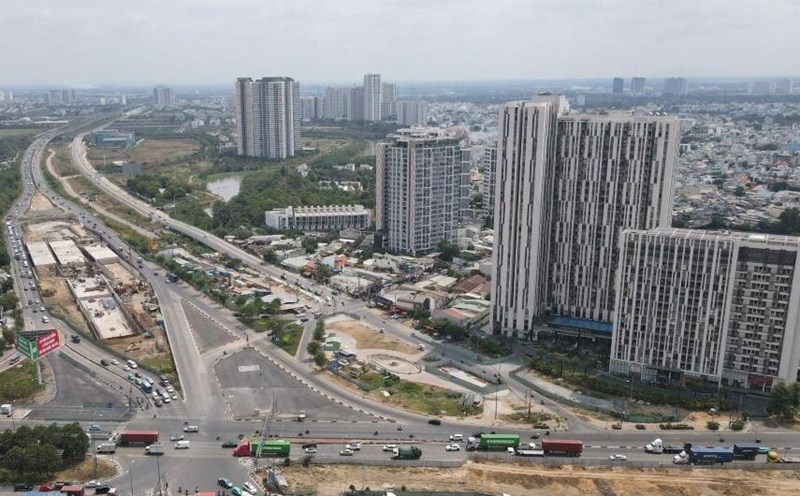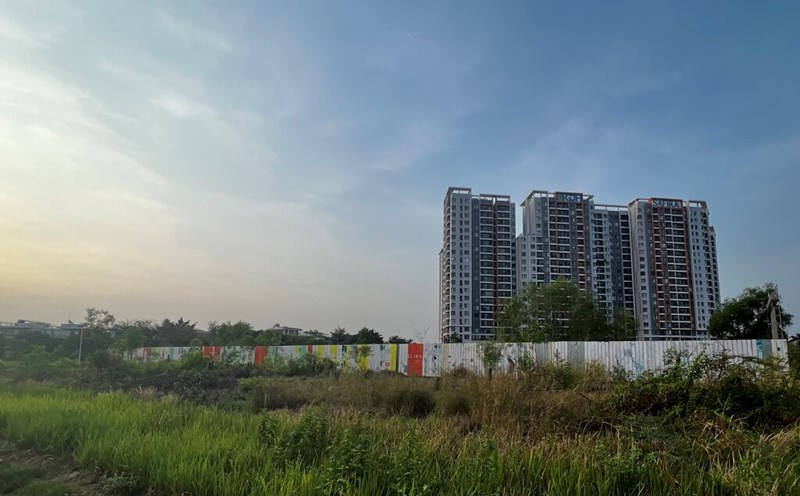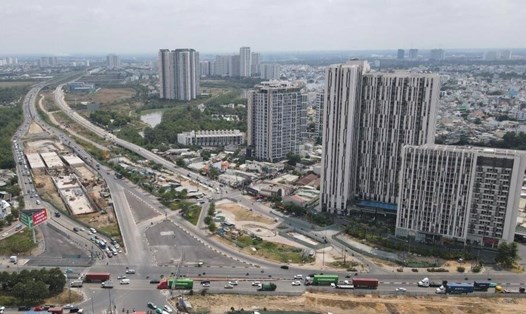According to data from the Vietnam Association of Realtors (VARS), as of the end of September 2024, the supply of apartments in Hanoi and Ho Chi Minh City, although increasing, mainly came from old projects and a few projects that have been cleared, while a large number of projects are still waiting for consideration and resolution.
More seriously, limited supply is considered the main reason for the imbalance between supply and demand that has lasted for a long time. New products launched to the market, if any, are 80% in the mid- and high-end segments with a minimum selling price of over 50 million VND/m2. The affordable apartment segment (price under 25 million VND/m2) - affordable housing has been absent for the past few years and is very difficult, even impossible, to reappear in Hanoi and Ho Chi Minh City.
Dr. Nguyen Duy Phuong, Investment Director of DG Capital, said that many people think that the high price of apartments is partly due to investors and brokers pushing it up when supply is scarce. But in reality, there is no other way when the time to complete legal procedures for the project is too long, causing costs to increase, forcing product prices to increase to ensure input balance. Many businesses want to build low-cost housing, but with the current situation of high input costs and slow problem solving, it is very difficult to do so.
As house prices have risen so high, housing affordability has declined sharply in recent years, to the point where the group representing the top 20% of the population cannot afford to buy a home, according to VARS.
There are three main reasons for the sharp decline in housing affordability in the past few years. First, real estate prices in major cities have far exceeded the financial capacity of the majority of people. The rate of increase in real estate prices is many times faster than the rate of increase in income. Since the COVID-19 pandemic, real estate prices (especially apartments) in major cities such as Hanoi, Da Nang and Ho Chi Minh City have continuously increased, establishing a new level 30% higher than in 2019.
Meanwhile, the average income per capita in urban areas in 2023 will only increase by about 4% compared to 2019. The average income of group 5 in Hanoi and Da Nang in 2023 will increase by 3% and 7% respectively compared to 2019. Even the average income of group 5 in Ho Chi Minh City recorded a negative growth rate of 8%.
"The gap between income and housing prices is widening, especially for middle-class and upper-middle-class households," VARS said.
Second, the current housing supply is mainly focused on the mid-range and high-end segments, while affordable housing is the main demand of the market. Very few housing projects cost less than VND30 million/m2, leaving most people without suitable options.
In addition, some investors take advantage of the scarcity of market supply to unreasonably increase selling prices, causing real estate prices to rise, even in areas without many infrastructure advantages, also causing difficulties for those who have a real need to buy houses.
The third is speculative behavior. This is one of the main factors driving the skyrocketing real estate prices. According to VARS, in the context of other investment channels still having many fluctuations, the psychology of hoarding assets and the expectation that real estate prices will continue to increase has caused many people to buy real estate without the intention of actual use. They buy real estate and then leave it abandoned, waiting for the price to increase, making the imbalance between supply and demand even worse.












